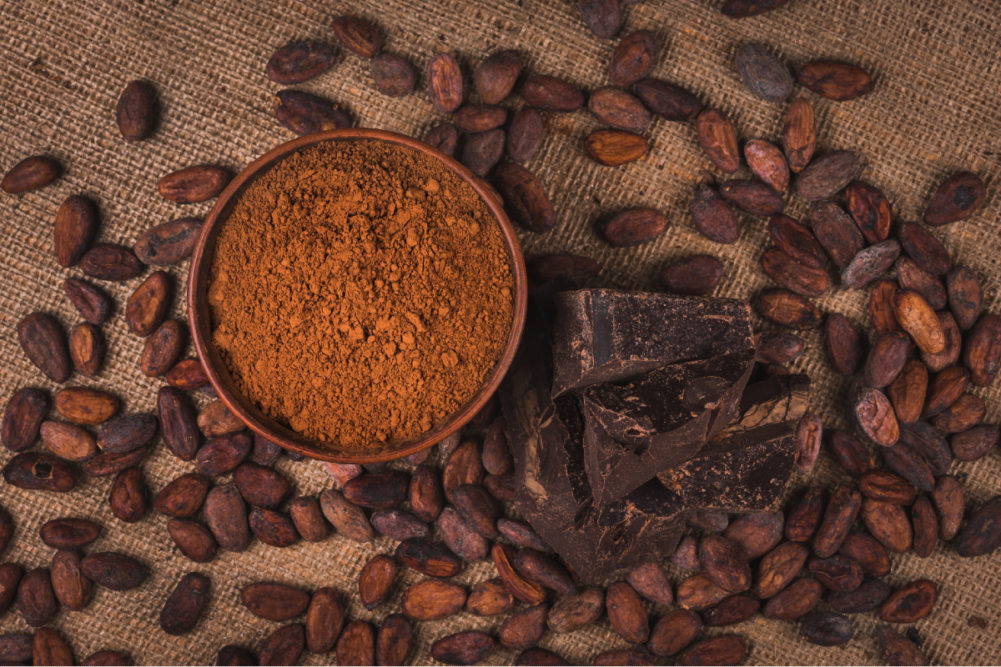KANSAS CITY, MO. — Plummeting supply and surging prices have insinuated a meltdown in the chocolate market. And analysts are growing less hopeful for a quick correction.
Nearby New York ICE cocoa bean futures prices have jumped about 58% since the start of 2024 and are about 143% higher than a year ago. London ICE cocoa bean futures also have reached record highs in multiple sessions, trading up to £5,620 per tonne on Mar. 5.
The price surges in cocoa bean futures have trickled down to the consumer level. Data from the US Department of Agriculture indicate the price of sweets overall is rising almost three times faster than the rate of broader inflation. And a recent report from the International Cocoa Organization (ICCO) forewarned consumers may likely continue to see higher chocolate confectionery prices or a shrinkage in products being offered.
“The industry is in justified panic mode,” said Hugo van der Goes, vice president cocoa, North America, for Barry Callebaut. “In Europe, there are hardly any stocks of cocoa butter and we’re seeing very low stocks of cocoa powder in the US, and while there has been some pushback on the retail side and demand for confectionery products in general is down, it is not compensating for the shortfall in supply.”
The situation is almost a perfect storm for chocolate confectionery manufacturers who also have been managing high sugar prices. While sugar prices have eased in recent months, cocoa futures prices continue to notch successive record highs, and there is little indication of a correction anytime soon, said van der Goes.
“The trends are pointing to another deficit next year,” he told International Sweetener Colloquium attendees Feb. 28 in Aventura, Fla., cautioning cocoa bean buyers about the possibility of going into 2025 with hardly any inventory of beans or products.
In a Feb. 29 quarterly update, the ICCO forecast 2023-24 global stocks at 4.449 million tonnes, down 11% from 2022-23. The ICCO also increased its global cocoa deficit forecast for the current season to 374,000 tonnes, sharply higher than the 74,000 tonne-deficit the ICCO estimated for 2022-23. In his presentation at the Colloquium, van der Goes said Barry Callebaut was forecasting a much larger deficit of 500,000 tonnes for 2023-24 and a deficit of 150,000 tonnes in 2024-25, the world’s fourth consecutive cocoa bean deficit, assuming normal weather conditions.
Following a recent survey of exporters, pod counters and regulatory officials, 2023-24 cocoa bean production in top producer Ivory Coast was forecast at 1.8 million tonnes, down 550,000 tonnes, or 24%, from 2.3 million tonnes in 2022-23. The 2023-24 cocoa bean production in Ghana was reduced to 580,000 tons, down 11% from a prior forecast of 654,000 tons. The two West African nations supply approximately 70% of the world’s cocoa beans.
In addition to adverse weather, the rapid spread of swollen shoot disease has had a major impact on cocoa production in the region. Some industry sources believe the sharp decline may signal a structural change from cocoa beans to palm as there is no cure for the viral cocoa tree disease, and land can’t be replanted for five years after the infected trees are removed. Previously, farmers would move to new forested areas and replant trees, but recent environmental restrictions have prohibited the practice.
Van der Goes also said there is little incentive for farmers in the Ivory Coast and Ghana to reinforce their cocoa bean crops with increased fertilizer usage or supplementing labor since prices for their beans were determined about a year ago, preventing them from cashing in on the recent price spikes.
“In Africa, some (processing) plants will run out of beans,” he said, adding that suppliers in the Ivory Coast and Ghana are oversold and have ceased forward selling.
Recent data from the GEPEX group of exporters showed Ivory Coast’s cocoa grind in January was down 3.6% year-over-year at 63,380 tonnes. The nation’s total grind year-to-date for the 2023-24 season was 233,333 tonnes, down 2.1% from the same period a year ago. The Ivory Coast has a total grinding capacity of 713,000 tonnes.
Port arrivals in the Ivory Coast were down 29% from a year ago, reaching 1.917 million tonnes by March 3 since the start of the season Oct. 1.
Given the back-to-back global deficits along with the mounting weather, agricultural and political hurdles in West Africa, van der Goes said the industry may be shifting its support to reinforce cocoa production in Latin America, especially since the countries have the ability to expand acres dedicated to cocoa trees without encroaching on rainforest areas. But the transition will take time.
“These areas are still small compared to production capacity in West Africa, but five years from now, it is very possible that Latin America will have significantly more production capacity than they have today,” he said.
For now, van der Goes advised chocolate buyers at the colloquium to make sure they were covered through 2024 and encouraged them to consider coverage for 2025.
“It is a big risk premium, so you need to judge the prices you’re quoted, but I don’t see why cocoa powder and cocoa butter prices will come down from where they are now,” he said.

